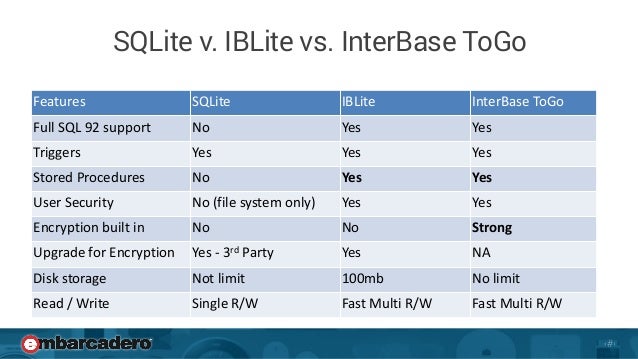SQLite LIMIT clause is used to limit the data amount returned by the SELECT statement. Following is the basic syntax of SELECT statement with LIMIT clause. Limits In SQLite Limits in the context of this article means sizes or quantities that can not be exceeded. We are concerned with things like the maximum number of bytes in a BLOB or the maximum number of columns in a table. SQLite was originally designed with a policy of avoiding arbitrary limits.
Of course, every program that runs on a. The LIMIT clause is an optional part of the SELECT statement. You use the LIMIT clause to constrain the number of rows returned by the query. This SQLite tutorial explains how to use the SELECT LIMIT statement in SQLite with syntax and examples.
The SQLite SELECT LIMIT statement is used to retrieve records from one or more tables in SQLite and limit the number of records returned based on a limit value. Hence, to find the current value of a limit without changing it, simply invoke this interface with the third parameter set to -1. Run-time limits are intended for use in applications that manage both their own internal database and also databases that are controlled by untrusted external sources.
An example application might be a web browser. To write SQL queries in an SQLite database, you have to know how the SELECT, FROM, WHERE, GROUP BY, ORDER BY, and LIMIT clauses work and how to use them. During this tutorial, you will learn how to use these clauses and how to write SQLite clauses. The only way to get a predictable order is to use ORDER BY explicitly. Using the LIMIT statement in a SQLite.
How do you enable LIMIT for DELETE in SQLite? In a compound SELECT, the LIMIT clause applies to the entire compoun not just the final SELECT. If the right-most simple SELECT is a VALUES clause then no LIMIT clause is allowed. Any scalar expression may be used in the LIMIT clause, so long as it evaluates to an integer or a value that can be losslessly converted to an integer.
Maximum Number Of Rows In A Table. This limit is unreachable since the maximum database size of 1terabytes will be reached first. Regardless of whether or not the limit was change the sqlite3_ limit () interface returns the prior value of the limit. Können Sie ändern SQLITE _MAX_PAGE_COUNT oder SQLITE _MAX_PAGE_SIZE in der Quelle, aber dies wird natürlich erfordern Sie eine benutzerdefinierte build von SQLite für Ihre Anwendung.
Soweit ich weiß, gibt es keine Möglichkeit, einen Grenzwert festlegen programmgesteuert andere als zur compile-Zeit (aber ich würde gerne als falsch erwiesen). Wie überprüfe ich in SQLite , ob eine Tabelle existiert? Verbesserung der INSERT-per-second-Leistung von SQLite ? Was sind die besten Vorgehensweisen für SQLite unter Android? This SQL tutorial explains how to use the SELECT LIMIT statement in SQL with syntax and examples. The SQL SELECT LIMIT statement is used to retrieve records from one or more tables in a database and limit the number of records returned based on a limit value.

Finally, use the ORDER BY and LIMIT clauses in the UPDATE statement to specify the number of rows to update. Notice that if use a negative value in the LIMIT clause, SQLite assumes that there are no limit and updates all rows that meet the condition in the preceding WHERE clause. SQLite database files are commonly used as containers to transfer rich content between systems and as a long-term archival format for data.
SQLite ORDER BY clause is used to sort the data in an ascending or descending order, based on one or more columns. You can use more than one column in the ORDER BY.
Keine Kommentare:
Kommentar veröffentlichen
Hinweis: Nur ein Mitglied dieses Blogs kann Kommentare posten.